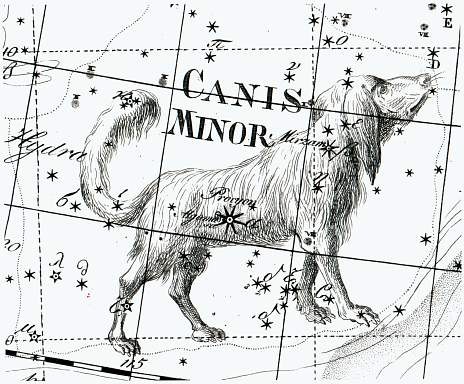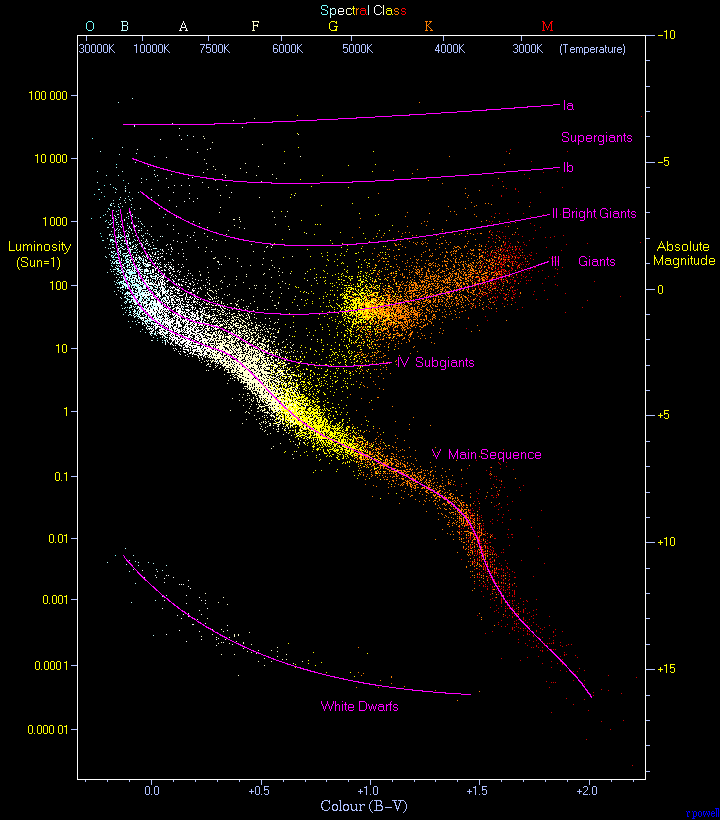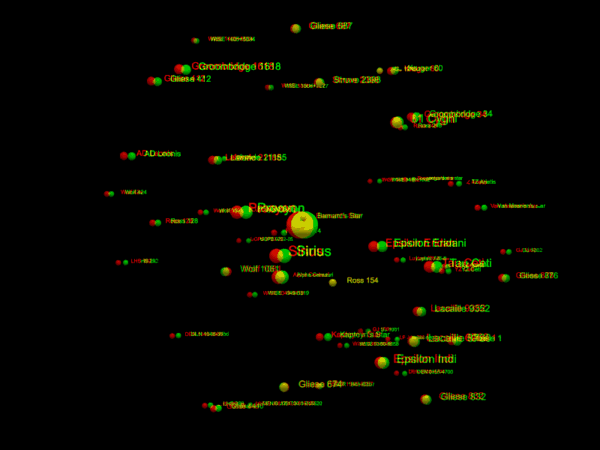|
Canis Minor
Canis Minor is a small constellation in the Celestial sphere, northern celestial hemisphere. In the second century, it was included as an Asterism (astronomy), asterism, or pattern, of two stars in Ptolemy's 48 constellations, and it is counted among the Lists of constellations, 88 modern constellations. Its name is Latin for "lesser dog", in contrast to Canis Major, the "greater dog"; both figures are commonly represented as following the constellation of Orion (constellation), Orion the hunter. Canis Minor contains only two stars brighter than the fourth apparent magnitude, magnitude, Procyon (Alpha Canis Minoris), with a magnitude of 0.34, and Gomeisa (Beta Canis Minoris), with a magnitude of 2.9. The constellation's dimmer stars were noted by Johann Bayer, who named eight stars including Alpha and Beta, and John Flamsteed, who numbered fourteen. Procyon is the List of brightest stars, eighth-brightest star in the night sky, as well as one of the List of nearest stars, close ... [...More Info...] [...Related Items...] OR: [Wikipedia] [Google] [Baidu] [Amazon] |
Luyten's Star
Luyten's Star (GJ 273) is a red dwarf in the constellation Canis Minor located at a distance of from the Sun. It has a visual magnitude of 9.9, making it too faint to be viewed with the unaided eye. It is named after Willem Jacob Luyten, who, in collaboration with Edwin G. Ebbighausen, first determined its high proper motion in 1935. The star has two confirmed planets and two candidate planets, of which Luyten b is in the circumstellar habitable zone. Properties This star is approximately a quarter the mass of the Sun and has 35% of the Sun's radius. Luyten's Star is at the maximum mass at which a red dwarf can be fully convective, which means that most if not all of the star forms an extended convection zone. It has a stellar classification of M3.5V, with the V luminosity class indicating this is a main-sequence star that is generating energy through the thermonuclear fusion of hydrogen at its core. The projected rotation rate of this star is too low to be measu ... [...More Info...] [...Related Items...] OR: [Wikipedia] [Google] [Baidu] [Amazon] |
Procyon
Procyon () is the brightest star in the constellation of Canis Minor and usually the list of brightest stars, eighth-brightest star in the night sky, with an apparent visual magnitude of 0.34. It has the Bayer designation α Canis Minoris, which is Latinisation of names, Latinized to Alpha Canis Minoris, and abbreviated α CMi or Alpha CMi, respectively. As determined by the European Space Agency ''Hipparcos'' astrometry satellite, this system lies at a distance of just , and is therefore one of Earth's List of nearest stars, nearest stellar neighbors. A binary star system, Procyon consists of a white-hued main-sequence star of spectral type F5 IV–V, designated component A, in orbit with a faint white dwarf companion of spectral type DQZ, named Procyon B. The pair orbit each other with a orbital period, period of 40.84 years and an orbital eccentricity, eccentricity of 0.4. Observation Procyon is usually the eighth-brightest star in the night sky, Culmina ... [...More Info...] [...Related Items...] OR: [Wikipedia] [Google] [Baidu] [Amazon] |
Gomeisa
Beta Canis Minoris (β Canis Minoris, abbreviated Beta CMi, β CMi), also named Gomeisa , is a star in the constellation of Canis Minor. In the night sky it is notable for its proximity to the prominent star Procyon. Nomenclature ''β Canis Minoris'' (Latinisation of names, Latinised to ''Beta Canis Minoris'') is the star's Bayer designation. The traditional name ''Gomeisa'' comes from the Arabic ''al-ghumaisa''' ("the bleary-eyed (woman)"), short for مرزم الغميصاء ''mirzam al-ghumaisa''' ("girdle of the bleary-eyed one"). In Arabic, the short form would be identical with the name of Procyon. In 2016, the International Astronomical Union organized a Working Group on Star Names (WGSN) to catalog and standardize proper names for stars. The WGSN's first bulletin of July 2016 included a table of the first two batches of names approved by the WGSN; which included ''Gomeisa'' for this star. In Chinese language, Chinese, (), meaning ''Well (Chinese constellation), ... [...More Info...] [...Related Items...] OR: [Wikipedia] [Google] [Baidu] [Amazon] |
HD 66141
HD 66141 is a single star in the equatorial constellation of Canis Minor. It has the Bayer designation G Canis Minoris, the Gould designation 50 G. Canis Minoris, and has the HR 3145 identifier from the ''Bright Star Catalogue''. When first catalogued it was in the Puppis constellation and was designated "13 Puppis", but it subsequently migrated to Canis Minor. Bode gave it the Bayer designation of Lambda Canis Minoris. Properties This star has an orange hue and is bright enough to be faintly visible to the naked eye on a dark night, having an apparent visual magnitude of +4.39. It is located at a distance of approximately 260 light years from the Sun based on parallax, and is drifting further away with a radial velocity of +71.6 km/s. The star is considered a member of the thin disk population. It has one known substellar companion, previously believed to be a planet, but now thought to be a likely brown dwarf, with some caveats. The stellar classification o ... [...More Info...] [...Related Items...] OR: [Wikipedia] [Google] [Baidu] [Amazon] |
Centre De Données Astronomiques De Strasbourg
Center or centre may refer to: Mathematics *Center (geometry), the middle of an object * Center (algebra), used in various contexts ** Center (group theory) ** Center (ring theory) * Graph center, the set of all vertices of minimum eccentricity * Central tendency, measures of the central tendency (center) in a set of data Places United States * Centre, Alabama * Center, Colorado * Center, Georgia * Center, Indiana * Center, Warrick County, Indiana * Center, Kentucky * Center, Missouri * Center, Nebraska * Center, North Dakota * Centre County, Pennsylvania * Center, Portland, Oregon * Center, Texas * Center, Washington * Center, Outagamie County, Wisconsin * Center, Rock County, Wisconsin **Center (community), Wisconsin *Center Township (other) *Centre Township (other) *Centre Avenue (other) *Center Hill (other) Other countries * Centre region, Hainaut, Belgium * Centre Region, Burkina Faso * Centre Region (Cameroon) * Cen ... [...More Info...] [...Related Items...] OR: [Wikipedia] [Google] [Baidu] [Amazon] |
SIMBAD
SIMBAD (the Set of Identifications, Measurements and Bibliography for Astronomical Data) is an astronomy, astronomical database of objects beyond the Solar System. It is maintained by the Centre de données astronomiques de Strasbourg (CDS), France. SIMBAD was created by merging the Catalog of Stellar Identifications (CSI) and the Bibliographic Star Index as they existed at the Meudon Computer Centre until 1979, and then expanded by additional source data from other catalogues and the academic literature. The first on-line interactive version, known as Version 2, was made available in 1981. Version 3, developed in the C (programming language), C language and running on UNIX stations at the Volgograd Observatory, was released in 1990. Fall of 2006 saw the release of Version 4 of the database, now stored in PostgreSQL, and the supporting software, now written entirely in Java (programming language), Java. , SIMBAD contains information for 5,800,000 stars and about 5,500,000 nons ... [...More Info...] [...Related Items...] OR: [Wikipedia] [Google] [Baidu] [Amazon] |
Solar System
The Solar SystemCapitalization of the name varies. The International Astronomical Union, the authoritative body regarding astronomical nomenclature, specifies capitalizing the names of all individual astronomical objects but uses mixed "Solar System" and "solar system" structures in theinaming guidelines document. The name is commonly rendered in lower case ('solar system'), as, for example, in the ''Oxford English Dictionary'' an''Merriam-Webster's 11th Collegiate Dictionary''. is the gravitationally bound Planetary system, system of the Sun and the objects that orbit it. It Formation and evolution of the Solar System, formed about 4.6 billion years ago when a dense region of a molecular cloud collapsed, forming the Sun and a protoplanetary disc. The Sun is a typical star that maintains a hydrostatic equilibrium, balanced equilibrium by the thermonuclear fusion, fusion of hydrogen into helium at its stellar core, core, releasing this energy from its outer photosphere. As ... [...More Info...] [...Related Items...] OR: [Wikipedia] [Google] [Baidu] [Amazon] |
Red Dwarf
A red dwarf is the smallest kind of star on the main sequence. Red dwarfs are by far the most common type of fusing star in the Milky Way, at least in the neighborhood of the Sun. However, due to their low luminosity, individual red dwarfs are not easily observed. Not one star that fits the stricter definitions of a red dwarf is visible to the naked eye. Proxima Centauri, the star nearest to the Sun, is a red dwarf, as are fifty of the sixty nearest stars. According to some estimates, red dwarfs make up three-quarters of the fusing stars in the Milky Way. The coolest red dwarfs near the Sun have a surface temperature of about and the smallest have radii about 9% that of the Sun, with masses about 7.5% that of the Sun. These red dwarfs have spectral types of L0 to L2. There is some overlap with the properties of brown dwarfs, since the most massive brown dwarfs at lower metallicity can be as hot as and have late M spectral types. Definitions and usage of the term "red d ... [...More Info...] [...Related Items...] OR: [Wikipedia] [Google] [Baidu] [Amazon] |
Binary Star
A binary star or binary star system is a system of two stars that are gravitationally bound to and in orbit around each other. Binary stars in the night sky that are seen as a single object to the naked eye are often resolved as separate stars using a telescope, in which case they are called ''visual binaries''. Many visual binaries have long orbital periods of several centuries or millennia and therefore have orbits which are uncertain or poorly known. They may also be detected by indirect techniques, such as spectroscopy (''spectroscopic binaries'') or astrometry (''astrometric binaries''). If a binary star happens to orbit in a plane along our line of sight, its components will eclipse and transit each other; these pairs are called ''eclipsing binaries'', or, together with other binaries that change brightness as they orbit, ''photometric binaries''. If components in binary star systems are close enough, they can gravitationally distort each other's outer stellar atmospheres. ... [...More Info...] [...Related Items...] OR: [Wikipedia] [Google] [Baidu] [Amazon] |
White Dwarf
A white dwarf is a Compact star, stellar core remnant composed mostly of electron-degenerate matter. A white dwarf is very density, dense: in an Earth sized volume, it packs a mass that is comparable to the Sun. No nuclear fusion takes place in a white dwarf; what light it radiates is from its residual heat. The nearest known white dwarf is Sirius B, at 8.6 light years, the smaller component of the Sirius binary star. There are currently thought to be eight white dwarfs among the hundred star systems nearest the Sun. The unusual faintness of white dwarfs was first recognized in 1910. The name ''white dwarf'' was coined by Willem Jacob Luyten in 1922. White dwarfs are thought to be the final stellar evolution, evolutionary state of stars whose mass is not high enough to become a neutron star or black hole. This includes over 97% of the stars in the Milky Way. After the hydrogen-stellar nucleosynthesis, fusing period of a main sequence, main-sequence star of Stellar mass, lo ... [...More Info...] [...Related Items...] OR: [Wikipedia] [Google] [Baidu] [Amazon] |
Main-sequence
In astronomy, the main sequence is a classification of stars which appear on plots of stellar color versus brightness as a continuous and distinctive band. Stars on this band are known as main-sequence stars or dwarf stars, and positions of stars on and off the band are believed to indicate their physical properties, as well as their progress through several types of star life-cycles. These are the most numerous true stars in the universe and include the Sun. Color-magnitude plots are known as Hertzsprung–Russell diagrams after Ejnar Hertzsprung and Henry Norris Russell. After condensation and ignition of a star, it generates thermal energy in its dense core region through nuclear fusion of hydrogen into helium. During this stage of the star's lifetime, it is located on the main sequence at a position determined primarily by its mass but also based on its chemical composition and age. The cores of main-sequence stars are in hydrostatic equilibrium, where outward thermal p ... [...More Info...] [...Related Items...] OR: [Wikipedia] [Google] [Baidu] [Amazon] |
List Of Nearest Stars
This list covers all known stars, white dwarfs, brown dwarfs, and sub-brown dwarfs within of the Sun. So far, 131 such objects have been found. Only List of nearest bright stars, 22 are bright enough to be visible without a telescope, for which the star's visible light needs to reach or exceed the dimmest brightness visible to the naked eye from Earth, which is typically around 6.5 apparent magnitude. The known 131 objects are bound in 94 stellar systems. Of those, 103 are main sequence stars: 80 red dwarfs and 23 "typical" stars having greater mass. Additionally, astronomers have found 6 white dwarfs (stars that have exhausted all fusible hydrogen), 21 brown dwarfs, as well as 1 sub-brown dwarf, WISE 0855−0714 (possibly a rogue planet). The closest system is Alpha Centauri, with Proxima Centauri as the closest star in that system, at 4.2465 light-years from Earth. The brightest, most massive and most luminous object among those 131 is Sirius A, which is also the brightest s ... [...More Info...] [...Related Items...] OR: [Wikipedia] [Google] [Baidu] [Amazon] |







